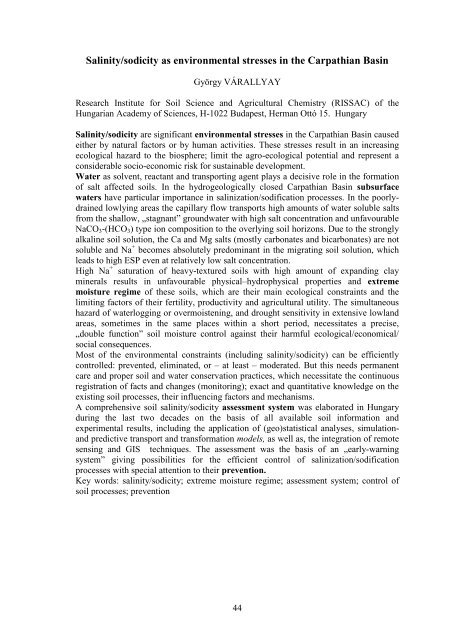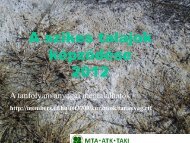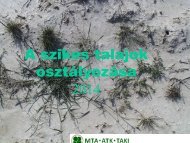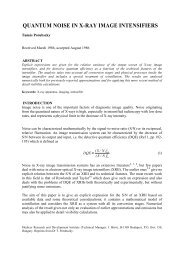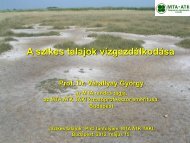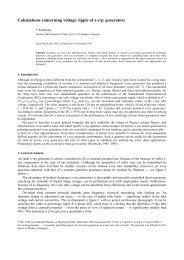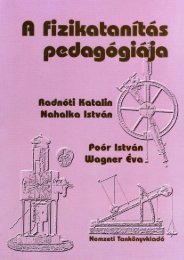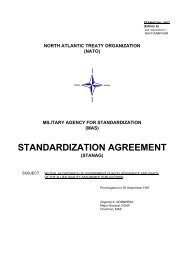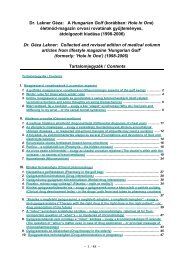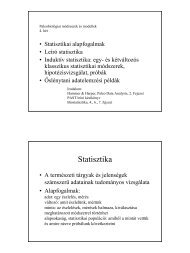Abstract form
Abstract form
Abstract form
You also want an ePaper? Increase the reach of your titles
YUMPU automatically turns print PDFs into web optimized ePapers that Google loves.
Salinity/sodicity as environmental stresses in the Carpathian Basin<br />
György VÁRALLYAY<br />
Research Institute for Soil Science and Agricultural Chemistry (RISSAC) of the<br />
Hungarian Academy of Sciences, H-1022 Budapest, Herman Ottó 15. Hungary<br />
Salinity/sodicity are significant environmental stresses in the Carpathian Basin caused<br />
either by natural factors or by human activities. These stresses result in an increasing<br />
ecological hazard to the biosphere; limit the agro-ecological potential and represent a<br />
considerable socio-economic risk for sustainable development.<br />
Water as solvent, reactant and transporting agent plays a decisive role in the <strong>form</strong>ation<br />
of salt affected soils. In the hydrogeologically closed Carpathian Basin subsurface<br />
waters have particular importance in salinization/sodification processes. In the poorlydrained<br />
lowlying areas the capillary flow transports high amounts of water soluble salts<br />
from the shallow, „stagnant” groundwater with high salt concentration and unfavourable<br />
NaCO 3 -(HCO 3 ) type ion composition to the overlying soil horizons. Due to the strongly<br />
alkaline soil solution, the Ca and Mg salts (mostly carbonates and bicarbonates) are not<br />
soluble and Na + becomes absolutely predominant in the migrating soil solution, which<br />
leads to high ESP even at relatively low salt concentration.<br />
High Na + saturation of heavy-textured soils with high amount of expanding clay<br />
minerals results in unfavourable physical–hydrophysical properties and extreme<br />
moisture regime of these soils, which are their main ecological constraints and the<br />
limiting factors of their fertility, productivity and agricultural utility. The simultaneous<br />
hazard of waterlogging or overmoistening, and drought sensitivity in extensive lowland<br />
areas, sometimes in the same places within a short period, necessitates a precise,<br />
„double function” soil moisture control against their harmful ecological/economical/<br />
social consequences.<br />
Most of the environmental constraints (including salinity/sodicity) can be efficiently<br />
controlled: prevented, eliminated, or – at least – moderated. But this needs permanent<br />
care and proper soil and water conservation practices, which necessitate the continuous<br />
registration of facts and changes (monitoring); exact and quantitative knowledge on the<br />
existing soil processes, their influencing factors and mechanisms.<br />
A comprehensive soil salinity/sodicity assessment system was elaborated in Hungary<br />
during the last two decades on the basis of all available soil in<strong>form</strong>ation and<br />
experimental results, including the application of (geo)statistical analyses, simulationand<br />
predictive transport and trans<strong>form</strong>ation models, as well as, the integration of remote<br />
sensing and GIS techniques. The assessment was the basis of an „early-warning<br />
system” giving possibilities for the efficient control of salinization/sodification<br />
processes with special attention to their prevention.<br />
Key words: salinity/sodicity; extreme moisture regime; assessment system; control of<br />
soil processes; prevention<br />
44


